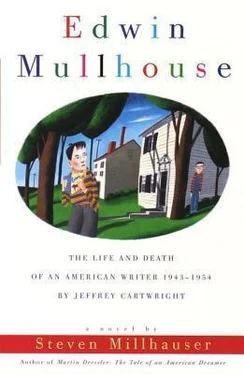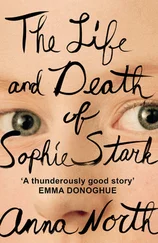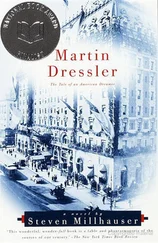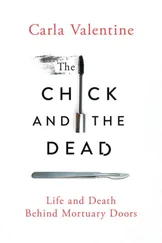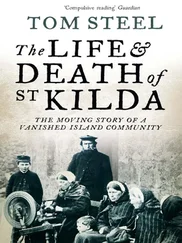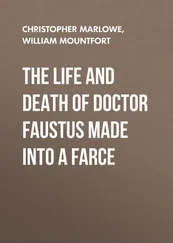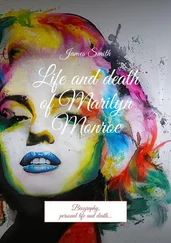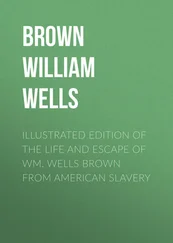IF THE EARLY YEARS are the pre-literate years, and the Late Years are the literary years, then the Middle Years may neatly be named the literate years. It was in the first grade that Edwin at last learned to read and print. Edwin was never again so dedicated a student, and we soon distinguished ourselves as the aptest of Mrs. Brockaway’s pupils. Very early in the year she divided the class into three reading groups, which met separately twice a day at the front of the room, and of course Edwin and I were in the top group. Otherwise I sat diagonally across from him at one of the room’s six tables. Mrs. Brockaway did not seat us alphabetically (a lucky stroke for this observer) but according to unnamed principles so various and elusive as to be comprehended only in the terms homogeneity and diversity. At opposite ends of our table sat quiet Susan Thompson and that loudmouth Billy Duda, while beside me sat Trudy Cassidy, already a babbler, and across from me, beside Edwin, none other than Donna Riccio, the most popular girl in the class, who in February received thirty-nine valentines, three from Edwin. In the third grade she began to lurk in obscure corners of the playground with Mario Antonio and that crowd, and soon she drifted into the middle reading group and at last into the lowest reading group, from which she never emerged. I suppose Edwin was infatuated with that black hair of hers, and there can be no question that he showed off in front of her in an unspeakable way, yet when all is said and done the whole thing must be dismissed as a light flirtation, not at all comparable to the raging fever later inspired in him by Rose Dorn, of all people. No, Edwin’s true passion in the first grade was for reading, and I suspect that he was more in love with the alphabet than with Donna Riccio’s red lips and raven locks.
Often I would see him snatching secret glances at Donna Riccio, lifting his gaze from her elbow to her blue short-sleeve, from her blue short-sleeve to her long black eyelashes, from her long black eyelashes to the blue bow in her shiny black hair, from her shiny black hair to the top of the blackboard where, stretching across the room like a vast title, the large green alphabet cards displayed their white letters, alternately capital and small.
In my opinion the instruction in reading progressed with excruciating slowness. For Edwin, who had no opinion, it was all a fascinating game. It was not the first time I had been led to reflect upon the transforming powers of the creative imagination. Our first book, to call it that, was a green soft-covered affair longer than it was tall, whose pages were divided into horizontal rows of little colored pictures. Each row began with a letter. As Mrs. Brockaway named the pictures, we had to put an X through each one that began with the letter on the left. It was the sort of exercise suitable for a three-year-old, or a two-year-old, or a clever cat, and I could not understand why my time was being wasted in this manner. But Edwin crossed out his pictures with tireless rapture. Moreover, he was always contriving difficulties. One row, beginning with b, showed a bear, a door, a book, a baseball bat, and a moon. Hurrying ahead of Mrs. Brockaway, who was still on the previous page, Edwin crossed out the bear, the door, and the baseball bat, leaving the book and the moon. When Mrs. Brockaway read the pictures, Edwin was stunned; he insisted that the door was a bathroom door and the book a dictionary. Mrs. Brockaway said he should wait for her to read the pictures. Edwin asked how she knew the book wasn’t a dictionary. Mrs. Brockaway said that a dictionary was also a book and that he would never learn anything if he didn’t stop asking questions and start paying attention. Edwin stopped asking questions, but he continued to rush ahead. He felt a strong affection for the little pictures, which kept on reappearing, so that soon the goat, the mitten, the bear, the book, the fox, the mailman, the goose, the gate were as familiar to him as Careless Carrie and Hayseed Hank in his deck of Old Maid cards.
He was also fond of the long pale word-cards with thick black letters that Mrs. Brockaway held up from time to time in order to teach us something or other: bit, fit, sit, pit, hit, or dot, not, hot, lot, pot, or bat, cat, rat, mat, fat. Later we went on to flat, brat, chat, that, spat, but not gnat, not to mention cravat, which Edwin and I discovered a year later under the Vocabulary of Rhymes section in the back of a dictionary.
After the book with the rows of little pictures came a slim paper-covered book that Mrs. Brockaway referred to as the first pre-primer, presumably because it was so elementary that it did not exist. On the first page was a black cat on a round red rug, and under him was the word “Fluffy.” On the next page Fluffy was lying on his back in the grass with a red ball of yarn in his paws; on one side of him stood a little blond girl with a red bow in her hair who was pointing at him, and on the other side stood a boy with brown shorts and a skyblue shirt. Underneath were the words:
Look, Bobby.
Look at Fluffy.
Look at Fluffy play.
The inanity of it all was positively painful to me; but Edwin was enchanted by every page. I cannot believe that he cared two cents for the ridiculous stories, which for that matter were not even stories; what fascinated him must have been the sense of being initiated into a secret, of turning on a light in the spookhouse, of entering a garden that for years he had looked at through a little door — what fascinated him in short must have been the act of reading itself, as if that act were somehow independent of the particular words that called it into being. And strange to say, he was deeply moved by the insipid illustrations, which were changed by the pressure of his imagination as completely as a ring of green water is changed by the pressure of the breath into a stream of many-colored bubbles. The pictures presented a world of white picket fences and green lawns and tall old trees with rope-swings and such stuff, a world of blue milk trucks on winding country lanes, a world in which it was not at all surprising to come across a white goat or to pay a visit to grandfather’s farm. It was a world, you might say, dimly reminiscent of his own but older and more intensely green. And perhaps the secret is this, that he was moved by the sense of having lost something that he could not name. Yes, and I think he also loved the sheer look of the page, whose few words and towering illustrations stirred up memories of earlier pages, so that through each one, as through a sheet of translucent glass, he saw vague shapes of islands and dragons, he saw from some half-remembered library book a dim fox carrying over his shoulder a gray bag that contained a hen, he saw Tootle wearing a daisy chain in a field filled with butterflies, he saw, kneeling at the kitchen table and frowning in stern concentration while his father read to him, himself.
After the first pre-primer came the second pre-primer, as if there were degrees of nonexistence, and after that the third pre-primer, and at last, long after I had given up all hope, the primer itself, memorable for its hard covers, and finally the first reader, more of the same unfortunately. All of these books produced in me the feeling that I was climbing steadily higher and higher on a staircase winding toward a remote room in which I had long since ceased to believe. They were all accompanied by workbooks, which fascinated Edwin with their simple games; he was never happier than when coloring in the pictures beginning with a certain letter, or putting the correct word in the blank, or drawing a line under the word in the right column that was the same as the single word on the left. I recall one exercise that required you to draw a line from a word to the picture it represented: Edwin drew a line from the word “bell” to a large striped ball, and hastily erased it as he glanced into my workbook. And I recall another exercise that reminded me of the rows of Donalds on Edward Penn’s wall:
Читать дальше
